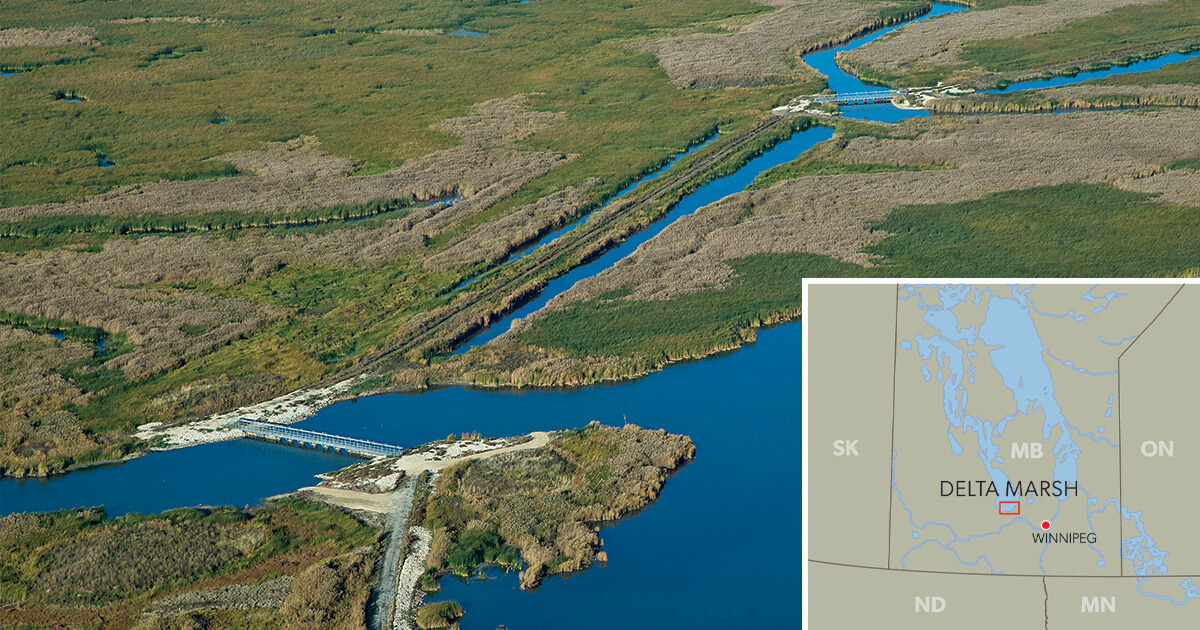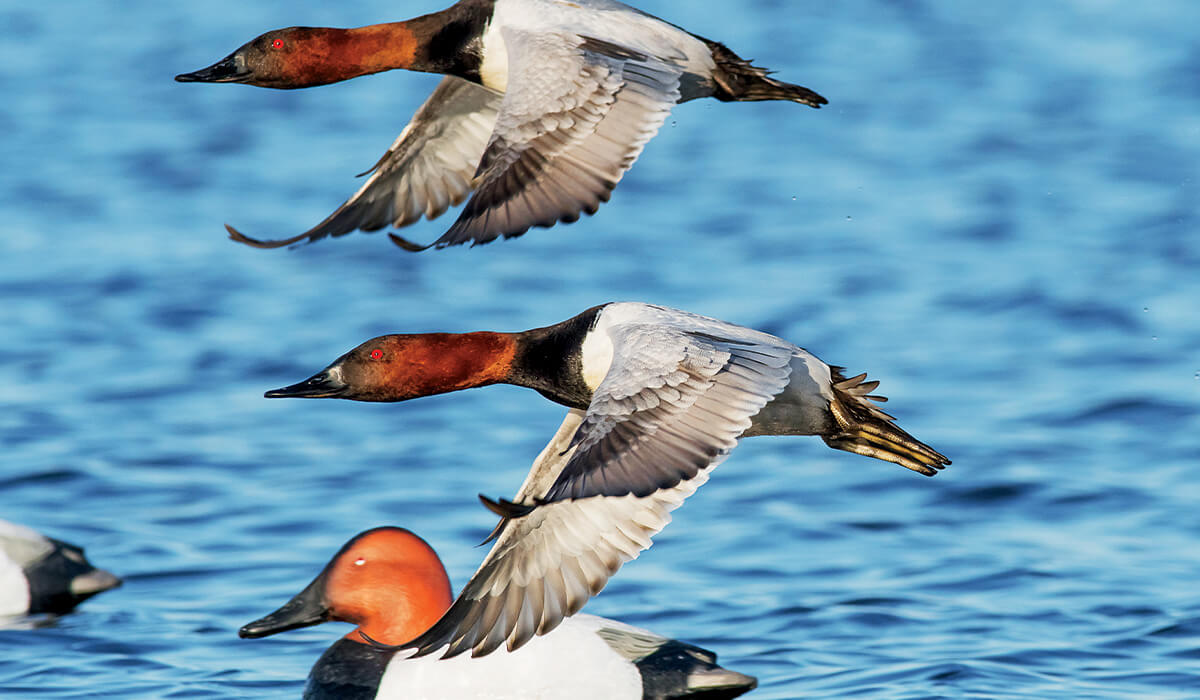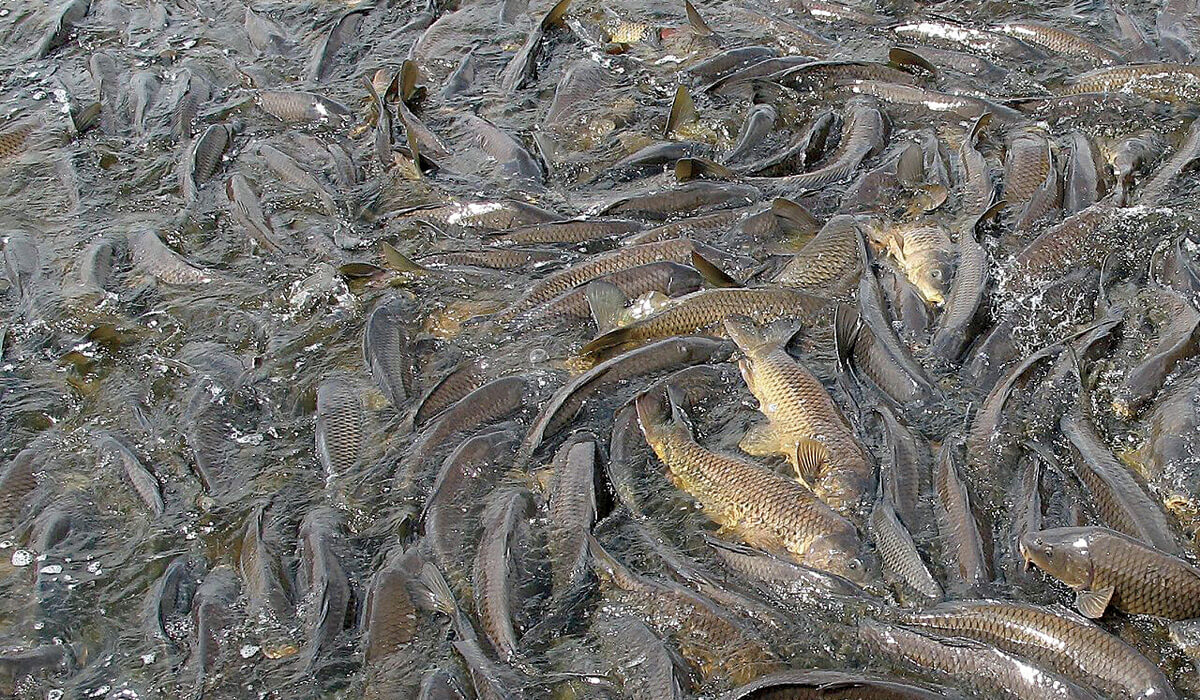Understanding Waterfowl: Rebirth of Delta Marsh
By excluding invasive carp, DU Canada and its partners are restoring this legendary waterfowl staging area to its former glory
By excluding invasive carp, DU Canada and its partners are restoring this legendary waterfowl staging area to its former glory
By Lauren Bortolotti, PhD, and Paige Kowal, MS

In south-central Manitoba, in the heart of North America, sits one of the continent’s largest and most well-known freshwater marshes. Located at the southern end of Lake Manitoba, Delta Marsh was for more than a century one of the world’s premier hunting destinations, where waterfowlers from all walks of life came to pursue the abundant flocks that passed through each fall. Although its location in the northern reaches of the Mississippi Flyway certainly didn’t hurt, its primary appeal to waterfowl was its expansive beds of submersed aquatic plants, which offered a rich supply of leafy vegetation, seeds, and rootstocks that would fuel the birds’ migration south. Numerous species of waterfowl gathered to stage at Delta Marsh, but it was arguably the diving ducks—redheads, scaup, and regal canvasbacks—whose abundance and appeal gave the area its legendary reputation. Sadly, the good times did not last. Much to the dismay of hunters and biologists, the sights and sounds that once defined Delta Marsh began to change. The waterfowl stopped coming, and the marsh grew silent.
The decline was tied to an invasive fish species, the common carp (Cyprinus carpio), which had become abundant in the marsh. This large bottom-feeding fish, which is native to Asia, was introduced to North America as a food fish in the 1870s. Although it never caught on as table fare, the species spread across the continent, leaving degraded wetlands in its wake. Common carp are bottom feeders, constantly searching for food by sucking up mouthfuls of sediments, filtering out particles of food, and then regurgitating the sediment. Their spawning activities in shallow water also disturb bottom sediments. The result is murky water, uprooted vegetation, increased algal blooms, and decreased growth of the submersed aquatic plants that once made wetlands like Delta Marsh so valuable to waterfowl. With limited food production in the marsh’s muddy waters, there was little reason for ducks to visit.
The impact of carp on vegetation and bird life can be substantial, and Delta Marsh was no exception. Analysis of historical surveys revealed that the area of submersed aquatic vegetation in the marsh declined by 87 percent between 1974 and 1997. Over that same period, estimates of daily duck use dropped by about 75 percent, from 25,000 to 6,000 birds.
To restore this iconic marsh to its former productivity, Ducks Unlimited Canada (DUC), the Province of Manitoba, and other partners crafted a plan to reduce the number of carp in the marsh, which would improve water quality, increase submersed aquatic vegetation, and, it was hoped, bring back the once numerous flocks of ducks. The primary challenge was figuring out how to reduce numbers of one fish species without negatively affecting others that use the marsh.

Delta Marsh is connected to Lake Manitoba by a series of channels, and the marsh provides vital spawning and nursery habitat for over 30 species of fish, many of which are economically and recreationally valuable. All large fish species that use the marsh, including carp, overwinter in Lake Manitoba and migrate into the marsh each spring, so simply blocking off access to the marsh wasn’t an option.
From 2009 to 2014, scientists studied fish passage from Lake Manitoba to identify environmental conditions that triggered carp migration into the marsh for spawning. They discovered that carp tend to migrate later than most native fish species, preferring warmer water temperatures for spawning. They also learned that carp are among the largest of the fish species that return to the marsh. Both discoveries were helpful in devising a method to exclude carp from entering the marsh while retaining access for spawning and feeding by other species.
The solution was to install a series of fish-exclusion structures on the channels that connect Delta Marsh to Lake Manitoba. These structures were equipped with screens to restrict carp passage into the marsh. Based on research findings, the spacing in the screens (2.75 inches) would prevent entry by the generally larger carp while permitting passage of smaller species. Equally important, the screens would be inserted into the structures just prior to peak migration of carp, which is determined through close monitoring of water temperatures.
Construction was completed in 2013, and the beneficial effects appeared soon after the fish-exclusion structures were in place. Numbers of large carp entering the marsh were significantly reduced, yet the structures and management protocols had minimal impact on large native fish. Relative abundance and mean length of large-bodied native fish, such as northern pike, yellow perch, and walleye, were similar to pre-exclusion levels. Additional monitoring allowed researchers and managers to further fine-tune screen placement protocols to achieve even greater rates of carp exclusion.
Marked improvements in water quality were noticed following installation of the exclusion screens. Inorganic suspended solids in the water column decreased by 32 percent, resulting in greater light penetration, which directly benefits the growth of submersed aquatic vegetation. In the eastern part of the marsh, coverage of submersed aquatic plants increased sevenfold, and plant diversity was comparable to that of the early 1970s. Although northern water milfoil (Myriophyllum sibiricum) was the dominant species to respond, sago pondweed (Stuckenia pectinata), a favorite food of diving ducks such as canvasbacks, also increased.

Much to the delight of all who visit the marsh, waterfowl numbers have increased dramatically following carp exclusion. Dabbling duck densities in late fall increased nearly 400 percent, and diving duck densities increased 339 percent. At a species level, daily use of the marsh by fall-staging scaup has rebounded from approximately 1,100 to 3,900 birds, while canvasback use has increased from only 200 to 3,300 birds. Overall, duck numbers observed on Delta Marsh in recent years are among the highest recorded in more than 40 years.
Although waterfowl and submersed aquatic vegetation were the primary targets of this long-anticipated wetland-restoration project, proper management of the marsh required a more comprehensive understanding of the interactions among the fish community, environmental conditions, marsh hydrology, nutrient inputs, and more. The restoration of Delta Marsh embodies the complex conservation challenges that Ducks Unlimited and our partners will continue to encounter. Now more than ever, solutions for waterfowl and wetlands conservation must also deliver other ecosystem services such as fish habitat and clean water. The science-based success of this project stands as an example of how this is possible.
Importantly, improvements in marsh conditions and duck abundance were achieved even without complete exclusion of carp from Delta Marsh. The hope is that the improvements to the ecosystem can be sustained so that the marsh will once again reliably serve as a high-quality waterfowl staging marsh and that this work will inspire others to tackle complex conservation challenges in other areas.
Dr. Lauren Bortolotti is a research scientist and Paige Kowal is a research biologist with DUC’s Institute for Wetland and Waterfowl Research in Stonewall, Manitoba.
Ducks Unlimited uses cookies to enhance your browsing experience, optimize site functionality, analyze traffic, and deliver personalized advertising through third parties. By continuing to use this site, you agree to our use of cookies. View Privacy Policy